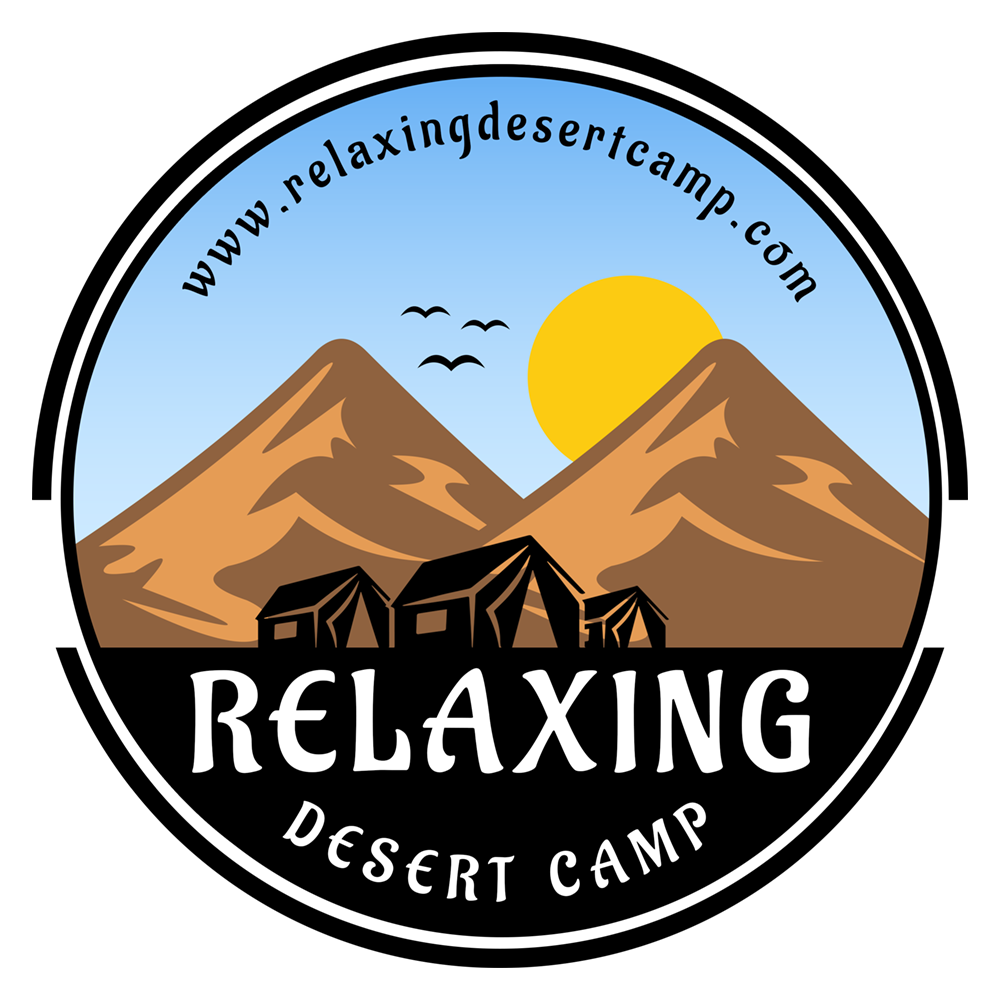About Morocco
Important Facts About Morocco – You may Not know some of them!
Morocco is located in North Africa, it’s one of the best tourist destinations all over the world. It’s the most stable country in the Area and known for its safety; so that, it’s the first desired tourism destiny nowadays. And after knowing about Morocco, I’m 100% sure that it will be your next Travel destination. Book your flight now and enjoy your holiday in Morocco with RelaxingDesertCamp!
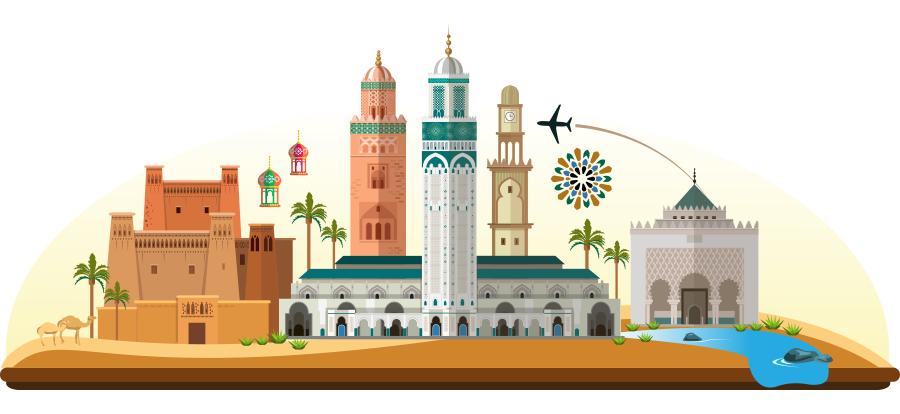
Morocco is a Multiple community; with more than four spoken varieties
The premium Phosphates exporter is Morocco
Morocco is the port that connects Africa to the Euroup
The primary source of the best Fish in the world gets back to Morocco
The Moroccan cuisine is one of the greatest in the world
Morocco has the best and most charming cities ever: Chefchouane, Essaouira, Agadir, Marrakech…
Morocco is bordering the Atlantic Ocean and Mediterranean Sea.
Morocco is an oldest impair and the oldest Kingdom ever, was founded more than 1000 years BC from now
The best climax ever, cold in the High Atlas Mountains, sunny in South and Southeast, Mild in the Middle and Coastal
Most of the ancient heritage, culture, and traditions are still preserved now such as Volubilis, Mellah, Jewish Cemeteries and synagogues, the old Celebrations, ancient Recipes, etc
Morocco has the oldest university in the world, founded in Fes, was built by Fatima El-Fehria, named Jamiaat Al-Qarouiane, hase more than 1163 years
Morocco is located in the Marginal of South Africa, and the far north of the Maghreb. As the best location ever
Things you don’t know about Moroccan People
The first thing that someone should ask about before visiting a new place is its people. So, when you know them; you became aware of how you will be treated on that site and which type of people you will be interacted with. Also, that makes you feel more comfortable and safer. Otherwise, if you don’t know anything about the place you’re about to go in and its people, that would put you in danger and risk.
What you should know about Moroccan people is that they are generous, humble, and kind. One of their traditions is to treat guests and visitors well. All those who have been in Morocco created a wonderful relationship with the Moroccan people and had unforgettable memories with them.
You may be different from them with different cultures and beliefs; yet, you will be acceptable to the Moroccan people. And that’s what makes them unique and loved by visitors, they respect that you’re different.
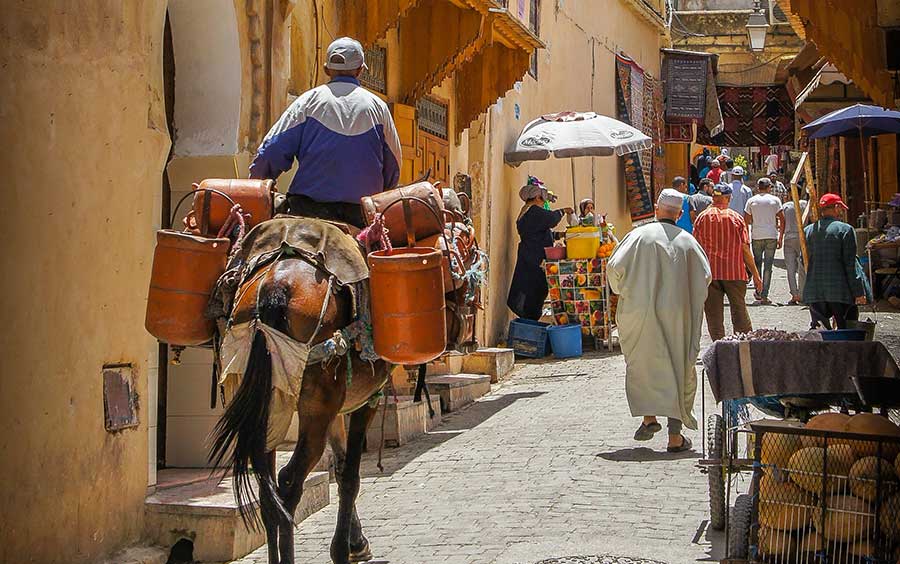
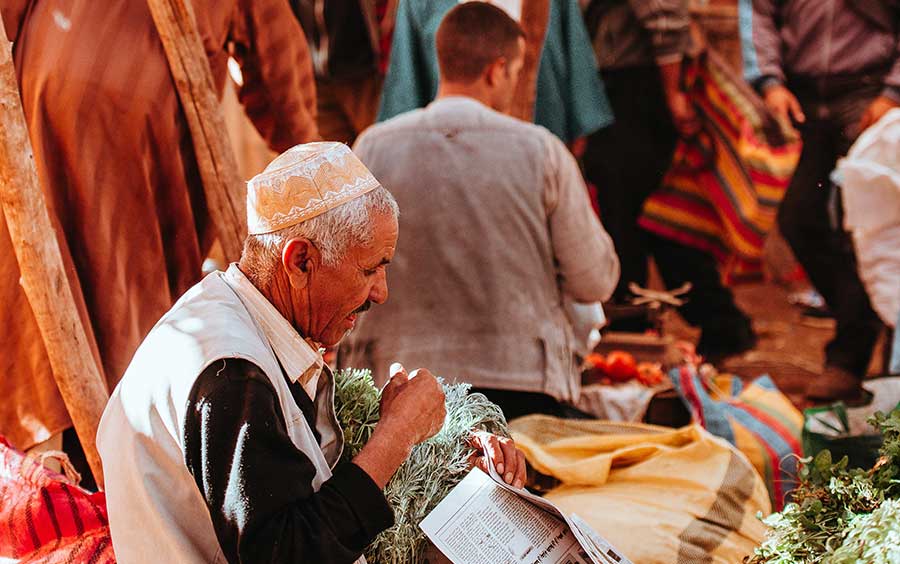
When you will visit a Berber village, you will feel yourself one of them because they will treat you with much love. You will discover that simplicity is the source of happiness, houses mad of clay, simple life, and no high buildings or factories but they are happy and always smile.
Lot of those who come to Morocco plan to stay long and some of them choose to have residence here. Nowadays, there are so many foreigners with Moroccan residence and identity starting a new life in this beautiful country.
Hospitality in Morocco
If you want to visit Morocco and you’re wondering whether you’re welcome or not, bear in mind that Morocco is an open door to all faces; it’s your second country.
Maybe in the past, there were some countries that are not allowed to come to Morocco but now most countries are being mostly welcomed. The main reason for that is the international diplomatic relationships of Morocco with other countries all over the world and also, the collaborations in a lot of areas such as the tourism sector.
The Moroccan minister of tourism is working hard to make the sector grow and to raise the number of tourists each year. And one of his strategies is facilitating arrangements for the visa to visitors and trying hard to make everything easier to have a comfortable trip to Morocco.
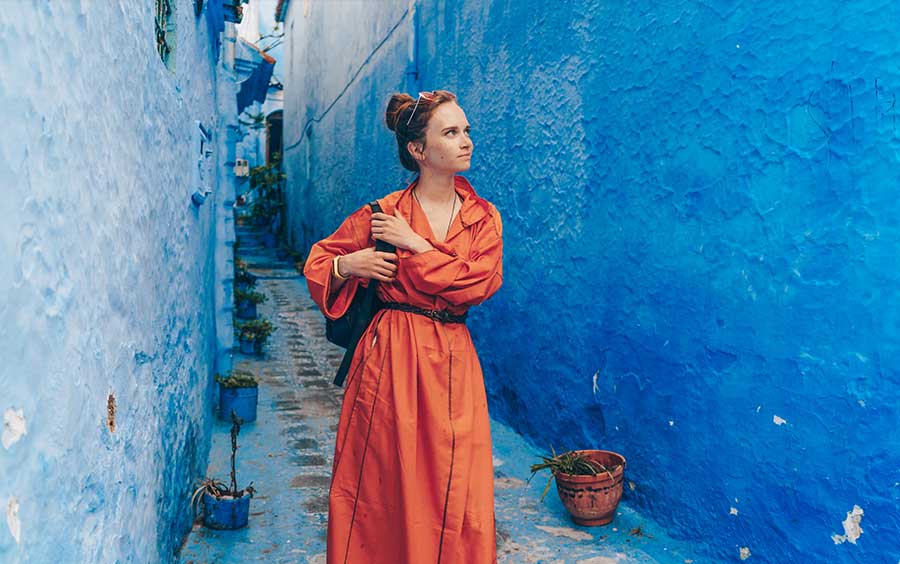
important facts about morocco
1. Geography and Climate
Morocco is situated at the crossroads of Europe, Africa, and the Middle East. It is bordered by the Atlantic Ocean and the Mediterranean Sea to the west and north, Algeria to the east, and Western Sahara to the south. The country offers diverse landscapes, including:
-
The Atlas Mountains: A great spot for hiking and trekking.
-
Sahara Desert: The world’s largest hot desert, where you can enjoy camel treks and stay in traditional desert camps.
-
Coastline: Morocco boasts beautiful beaches along the Mediterranean and Atlantic coasts.
-
Imperial Cities: Marrakech, Fes, Rabat, and Meknes, all have rich histories and UNESCO World Heritage sites.
The climate varies across the country:
-
Coastal areas: Mediterranean and Atlantic climates, with mild winters and warm summers.
-
Inland: Hot summers with cold winters, especially in the desert and mountainous regions.
-
Sahara Desert: Extremely hot during summer days, with cooler temperatures at night.
2. Language
The official languages of Morocco are Arabic and Berber (Tamazight), with French widely spoken as a second language. English is also becoming more common, especially in tourist areas, but it’s useful to learn a few basic phrases in Arabic or French to enhance your travel experience.
3. Currency
Morocco’s currency is the Moroccan dirham (MAD). While most establishments accept cash, it’s advisable to carry local currency, as smaller shops and markets may not accept credit cards. ATMs are available in major cities, and many tourist areas accept credit or debit cards.
4. Cultural Etiquette
Morocco is a predominantly Muslim country, and respecting local customs and traditions is important:
-
Dress modestly, especially in rural areas and when visiting religious sites. Women often wear scarves to cover their heads, though it’s not mandatory for tourists.
-
Greetings: A handshake is common, though it’s often more formal than in Western cultures. If you’re greeting a woman, wait for her to extend her hand.
-
Photography: Always ask for permission before taking photos of people, particularly women and in rural areas.
-
Ramadan: During the holy month of Ramadan, Muslims fast from dawn until sunset. While tourists are not expected to fast, it’s respectful to avoid eating or drinking in public during daylight hours.
5. Top 7 Destinations to Visit in Morocco
Marrakech, Red City
Marrakech, often referred to as the “Red City” due to its terracotta-colored buildings, is a vibrant blend of ancient tradition and modern flair, making it one of Morocco’s most iconic destinations. At its heart lies Jemaa el-Fna Square, a UNESCO World Heritage site known for its lively atmosphere, where snake charmers, food vendors, and performers fill the air with energy. Just a short walk away, the Koutoubia Mosque, with its towering 77-meter minaret, dominates the skyline and stands as a symbol of the city’s rich Islamic history. For a peaceful retreat, the Jardin Majorelle, a lush botanical garden designed by French painter Jacques Majorelle, offers a tranquil escape with its exotic plants and striking blue architecture. Marrakech is also famous for its bustling souks (markets), where visitors can shop for traditional crafts, vibrant textiles, and exquisite spices. Whether exploring the labyrinthine streets of the old medina, visiting the grand Bahia Palace, or indulging in Moroccan cuisine at a local riad, Marrakech is a city of rich culture, history, and adventure, offering something for every traveler.

The old city of Fes:
Fes is one of Morocco’s most captivating cities, renowned for its rich history and cultural significance. Home to one of the world’s oldest universities, Al Quaraouiyine, founded in 859 AD, Fes is often regarded as the spiritual and intellectual heart of Morocco. The Fes el-Bali medina, a UNESCO World Heritage site, is an ancient labyrinth of narrow alleyways, bustling souks, and historical landmarks that take you back in time. Visitors can explore the vibrant tanneries, where leather is dyed using traditional methods, as well as majestic palaces, intricate mosques, and madrassas. The city’s history is further reflected in its Bou Inania Medersa, a beautiful 14th-century religious school with remarkable Islamic architecture. Fes also offers a taste of Morocco’s culinary traditions, with food markets and local eateries serving dishes like b’stilla and harira.
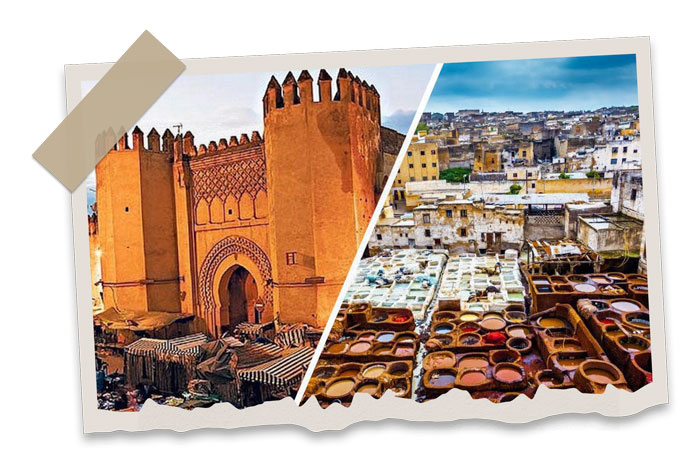
Chefchaouen, the blue city
Chefchaouen, known as the “Blue City,” is one of Morocco’s most picturesque destinations. Nestled in the Rif Mountains, this charming town is famous for its blue-painted buildings, which create a serene and photogenic atmosphere. Chefchaouen has long been a haven for artists and photographers, drawn to its unique architecture and stunning mountain views. Its relaxed pace offers a perfect escape from the bustle of Morocco’s larger cities. The narrow streets of the old medina are lined with quaint shops selling traditional crafts such as woven textiles, pottery, and jewelry. Visitors can explore the Kasbah, a 15th-century fortress with a lovely garden, or hike to the Ras El Maa Waterfall for breathtaking views of the town and surrounding mountains. Chefchaouen’s cool, tranquil ambiance, combined with its stunning blue walls and welcoming atmosphere, makes it an unforgettable destination.

Merzouga Desert
Merzouga, located on the edge of the Sahara Desert, is the gateway to one of Morocco’s most awe-inspiring experiences. Known for its towering sand dunes, including the famous Erg Chebbi, Merzouga offers a quintessential desert adventure. Travelers can embark on camel treks across the dunes, watching as the desert landscape shifts with the changing light of the day. Spending a night in a traditional desert camp beneath a blanket of stars is a highlight, offering a chance to experience the vastness and tranquility of the Sahara. In addition to camel treks, visitors can explore the Khamlia village, home to the descendants of former slaves from sub-Saharan Africa, where the traditional gnawa music provides a unique cultural experience. Merzouga also offers fascinating opportunities for stargazing, making it one of the best places in Morocco to witness the night sky.
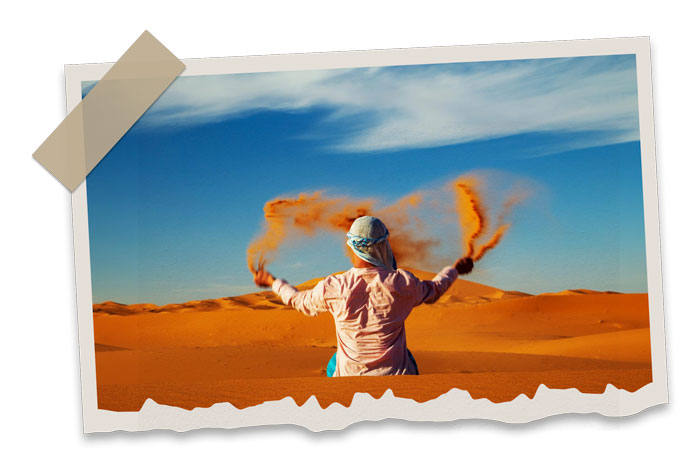
Casablanca, the white city
Casablanca is Morocco’s largest and most cosmopolitan city, offering a contrast of modernity and traditional Moroccan culture. This vibrant port city is known for its Art Deco architecture and its mix of European and Arab influences. The star attraction in Casablanca is the Hassan II Mosque, one of the largest mosques in the world, with its magnificent minaret reaching 210 meters in height. Visitors can take a guided tour to learn about the mosque’s intricate design and its location on the edge of the Atlantic Ocean. Casablanca is also a business hub, with bustling commercial districts, upscale restaurants, and trendy cafés. For those looking for a more relaxed vibe, the Corniche area offers beach resorts and oceanfront dining, providing a perfect escape from the city’s fast pace. Rick’s Café, a recreated version of the iconic film location, adds a touch of Hollywood nostalgia to the city.
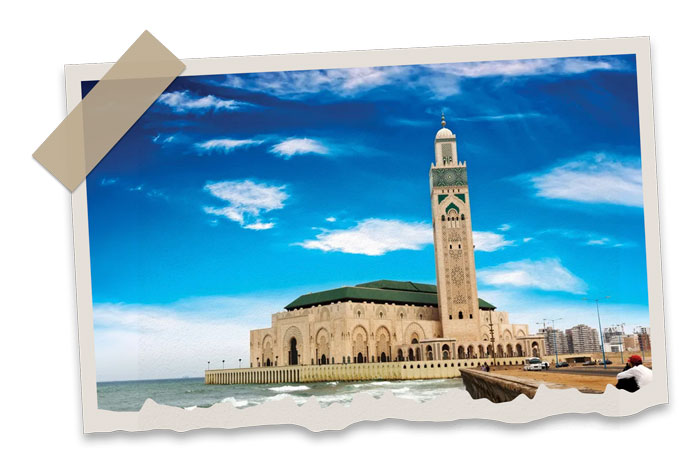
Rabat, the capital city
As the capital city of Morocco, Rabat blends history, culture, and modernity with ease. The city’s rich heritage is showcased in landmarks like the Hassan Tower, an unfinished minaret that stands as a symbol of Rabat’s historical ambition, and the Mausoleum of Mohammed V, the final resting place of the Moroccan king and his sons, adorned with intricate mosaics and marble. Rabat’s medina is less chaotic than those of Marrakech and Fes, but it offers a peaceful, yet vibrant experience, filled with souks, artisan workshops, and quiet cafés. The Kasbah of the Udayas, with its blue-and-white painted houses and panoramic views of the Atlantic Ocean, provides an ideal spot to explore the city’s past. Rabat is also home to modern attractions like the Mohammed VI Museum of Modern and Contemporary Art, showcasing contemporary Moroccan artists and international exhibitions.
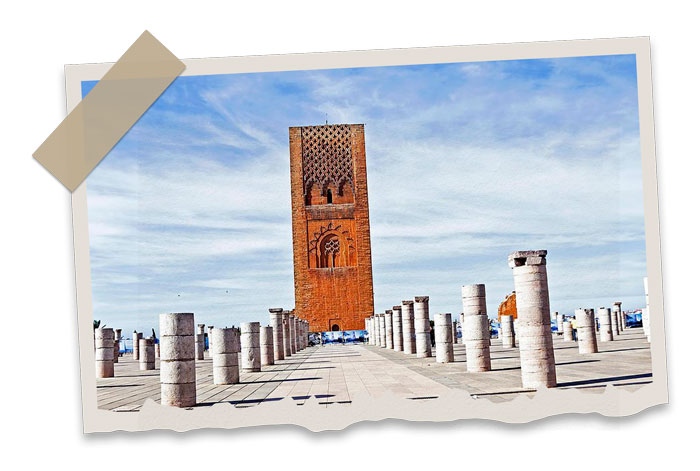
The Atlas Mountains
The Atlas Mountains are one of Morocco’s most stunning natural landscapes, offering dramatic peaks, deep valleys, and picturesque Berber villages. Spanning over 2,500 kilometers, the range stretches from the Atlantic coast to the Sahara Desert, making it an ideal destination for hiking, trekking, and mountain climbing. The highest peak in North Africa, Mount Toubkal, stands at 4,167 meters and is a popular trek for adventure enthusiasts. The mountain range also offers a glimpse into rural Berber life, with many villages still retaining their traditional ways of life. Visitors can explore the charming Imlil Valley, where guided treks to Toubkal base camp begin, or visit the Ourika Valley, a lush, green area known for its waterfalls and beautiful scenery. The Atlas Mountains provide an authentic and serene escape from Morocco’s bustling cities, with opportunities to stay in traditional guesthouses, enjoy Berber hospitality, and immerse yourself in the natural beauty of the region.
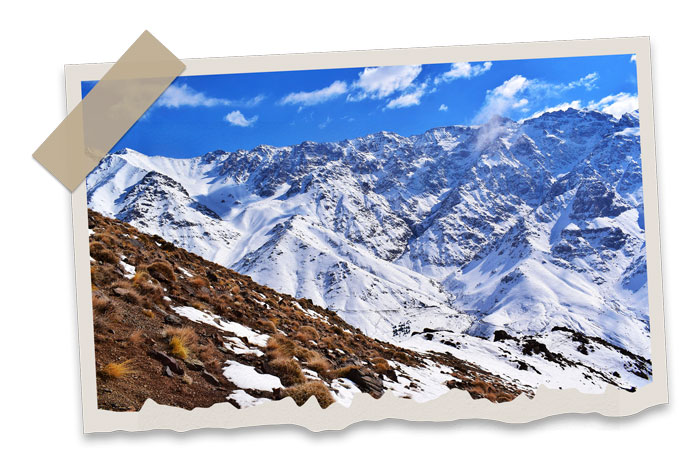
6. Local Cuisine
Moroccan cuisine is a delightful blend of Berber, Arab, and Mediterranean influences. Popular dishes include:
-
Tagine: A slow-cooked stew, typically made with lamb, chicken, vegetables, and dried fruits.
-
Couscous: A traditional dish made of steamed semolina, served with vegetables or meat.
-
Harira: A hearty soup made of tomatoes, lentils, chickpeas, and lamb, often eaten to break the fast during Ramadan.
-
Pastilla: A savory pastry filled with pigeon or chicken, almonds, and spices, often served during special occasions.
-
Mint Tea: Known as “Moroccan whisky,” this sweet tea is a symbol of hospitality and is served in nearly every home and café.
7. Transportation
Getting around Morocco is relatively easy with several transportation options:
-
Taxis: In cities, taxis are a convenient way to travel short distances. Be sure to agree on a price before you start the ride.
-
Trains: Morocco has an extensive and efficient train system, especially between major cities like Casablanca, Marrakech, and Fes. The train network is operated by ONCF, and it’s a comfortable way to travel.
-
Buses: Buses are affordable and can take you to many destinations, including remote areas. CTM and Supratours are the main bus companies.
-
Domestic flights: For long-distance travel, domestic flights are available from Casablanca, Marrakech, and Fes to other major cities.
8. Shopping and Souks
Morocco is a paradise for shoppers, especially for those interested in handcrafted goods. The souks (markets) are filled with:
-
Leather goods: Morocco is famous for its leather, particularly in Fes and Marrakech. Look for jackets, bags, shoes, and poufs.
-
Rugs and carpets: Moroccan rugs are renowned for their vibrant colors and patterns. Visit the souks in Marrakech or Fes to find unique, handmade pieces.
-
Spices: Moroccan spice markets are a sensory overload, with fragrant spices like cumin, saffron, cinnamon, and paprika available for purchase.
-
Silver and jewelry: Moroccan silver jewelry is intricately designed and is a great souvenir to take home.
-
Ceramics: Fes and Marrakech are known for their colorful, hand-painted pottery and ceramics.
9. Safety and Health
-
Safety: Morocco is generally a safe destination for tourists, though it’s essential to remain cautious in busy tourist areas, especially in cities like Marrakech and Fes, where petty theft can occur. Always keep an eye on your belongings.
-
Health: It’s recommended to drink bottled water, as tap water may not be safe for travelers. Make sure your vaccinations are up to date before traveling. If you’re visiting rural areas, be mindful of hygiene and food safety.
-
Travel Insurance: It’s advisable to have travel insurance covering medical emergencies, cancellations, and lost luggage.
10. Best Time to Visit
The best time to visit Morocco is during spring (March to May) and fall (September to November) when the weather is mild and pleasant. The summer months can be very hot, especially in the desert, while winters can be cold, particularly in the mountains.
11. Festivals and Events
Morocco is home to several exciting festivals throughout the year:
-
Mawazine Festival (Rabat): A massive music festival held in June, attracting global artists and music fans.
-
Fez Festival of World Sacred Music: Celebrating spiritual music from various cultures, usually held in June.
-
Marrakech International Film Festival: A prestigious event for cinema lovers, taking place in December.
-
Eid al-Fitr and Eid al-Adha: Important Muslim holidays celebrated with large family gatherings, feasts, and festivals.
